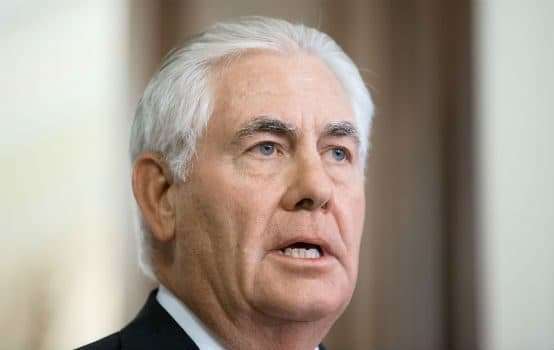
Speaking at the Hoover Institute, Secretary of State Rex Tillerson laid out the Trump administration’s vision for “a stable, unified, and independent Syria, free of terrorist threats and free of weapons of mass destruction.” Such a vision sounds a lot like what previous administrations said about Iraq and Afghanistan, which should be cause for worry. Afghanistan has become America’s longest running war and we still have troops in Iraq more than a decade after what some war supporters said would be a “cakewalk.”
Moreover, a long-term U.S. military presence in both those countries has not made them stable or unified—and nothing indicates they will be anytime soon. Nonetheless, Secretary Tillerson made clear that “[t]he United States will maintain a military presence in Syria” that is “conditions-based.”
But why commit to do in Syria what we haven’t been able to accomplish in either Afghanistan or Iraq? This is simply a prescription for another forever war.
The main reason we should employ American military force is that our national security is directly threatened. To be sure, Bashar al-Assad is an unsavory, odious dictator and a thug. He is certainly a threat to Syrians who oppose his rule. However, the regime in Damascus is not a direct military threat to the United States. Syria has no military capability to attack America. And to the extent that U.S. forces could be threatened by the Syrian military, it’s only because they’re within range of their weapons. According to a December 2017 Pentagon report, the U.S. has about 2,000 troops in Syria.
The fact that the Russians intervened on behalf of Assad should also give us pause. Why run the risk of direct confrontation with Russia—the only country in the world with enough nuclear weapons to destroy the United States—over a regime in Damascus that does not pose a threat to our national security?
Tillerson called out both ISIS and al Qaeda as threats in Syria that the United States must counter. However, to the extent they do pose a threat, it’s largely to local and regional actors. As such, combatting them should be up to Syria’s neighbors, which have more at stake and more to lose than we do.
Instead, we seem intent on pursuing regime change. Without uttering those exact words, Tillerson made clear that removing Assad from power was the desired end game by declaring that one of Washington’s conditions for Syria is “the underlying conflict between the Syrian people and the Assad regime is resolved through a UN-led political process prescribed in UN Security Council Resolution 2254, and a stable, unified, independent Syria, under post-Assad leadership, is functioning as a state.” Even more pointedly: “A stable, unified, and independent Syria ultimately requires post-Assad leadership.”
Apparently, the Trump administration hasn’t learned the lesson of Afghanistan, Iraq, and Libya. Disposing of dictators doesn’t lead to liberty and democracy in the region, but rather creates a vacuum for other extremist groups to fill.
Let us not forget that ISIS is a product of regime change. Deposing Saddam Hussein created the conditions that gave rise to al Qaeda in Iraq, which, in turn, morphed into ISIS. Moreover, almost certainly U.S. troops would remain in a post-Assad Syria—just as they have in Afghanistan and Iraq—which would sound a rallying call to radical Islamic elements and turn the American occupier into a target.
Where there is regime change, there will be nation building, something Tillerson tried to eschew and President Trump criticized on the campaign trail and in his new National Security Strategy, which claimed that “Stabilization is not a synonym for open-ended nation-building or a synonym for reconstruction.” But Tillerson’s language for establishing peace and stability in Syria is nation building by any other name: “stabilization initiatives in liberated areas are essential to making sure that life can return to normal.” Those initiatives include “essential measures such as clearing unexploded land mines left behind by ISIS, allowing hospitals to reopen, restoring water and electricity services, and getting boys and girls back in school.”
Perhaps most importantly, Tillerson made no mention of the potential cost of regime change and nation building in Syria. According to one estimate, the total tab for our wars in Iraq and Afghanistan is $5 trillion to date. There’s no reason to believe repeating those actions in Syria will be any less expensive. And why should the American taxpayer have to shoulder yet another burden?
President Trump says his National Security Strategy puts “America First.” Yet the administration’s Syria policy so far has done anything but.
Charles V. Peña is a senior fellow with Defense Priorities. He has more than 25 years of experience as a policy and program analyst and senior manager, supporting both the Department of Defense and Department of Homeland Security. Peña is the former Director of Defense Policy Studies at the Cato Institute and author of Winning the Un-War: A New Strategy for the War on Terrorism.
Sourse: theamericanconservative.com






